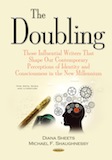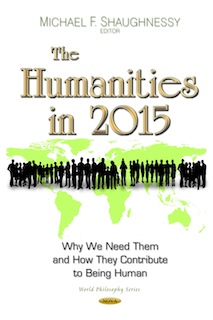Literary Fiction and "Adam's Curse"
Copyright © 2007 by Diana E. Sheets
To be a man today is to be threatened with extinction. Consider the recent book by Bryan Sykes Adam’s Curse: A Future Without Men (W. W. Norton & Company, Inc., 2004). By his account, the Y chromosome, the DNA signature of man, might cease to exist 125,000 years from now, thereby constituting a genetic terminus for the male of our species. Sykes argues that it is fragile compared with the other forty-five chromosomes that contain within them as many as 1000 different genes. Millions of years of attrition have left it with only a few hundred genes and no ability to exchange genetic material. Even the recent breakthrough by research scientist David Page that has demonstrated the internal recombinatory capability of the Y chromosome, according to Sykes, offers no guarantee that viable chromosomal repairs will reverse the prevailing trend.
However, it should be noted, the beleaguered plight of the Y chromosome has been painstakingly evident in literary fiction since the 1980’s. By then, it was becoming apparent that men would no longer be revered as the supreme story tellers. Women began to dominate the literary marketplace. Their growing success ensured the prevalence of feminine virtues. Consequently, literary fiction no longer venerated manly pursuits. Instead, narratives increasingly focused on the tangled emotional ties of love and family and friendship and the potential threats to domestic or conjugal bliss. Publishers, fixated on the bottom line, departed from their practice of subsidizing great fiction—male—with the sale of best-selling authors—female. Performance in the marketplace became the sole determinant of excellence, and those few novelists whose fiction became mega hits sought fame in the celebrity spotlight.
However, neither the changing societal norms nor the advertising spin developed to entice buyers to purchase these feminized stories influenced the predilections of “real” men. Today’s testosterone readers have deserted the pink-laced literary haven for the more manly spheres of nonfiction, graphic novels, gaming, pornography, and the Internet. The departure of men further intensified the XX chromosome-laden content of literary fiction. Not surprisingly, the few remaining testosterone-driven writers—Norman Mailer, Tom Wolfe, V.S. Naipaul, Philip Roth, and Cormac McCarthy—are atavistic relics of a bygone era when serious literature was created almost exclusively by men, and women celebrated their genius. But, dare we say it? These men are approaching expiration. With the possible exception of Martin Amis, the future of manliness or brutishness or unreasoned aggression in the face of triumphant feminine virtue is approaching nil.
If the estrogenated coterie had been satisfied nesting within the domain of invented characters and stories, perhaps society as a whole might have remained indifferent to the dismal fate of fiction. But as women entered the workforce in greater and greater numbers, their concerns and grievances began to be publicly expressed. Demands of fairness and professionalism and gender-neutrality became the watchwords of the era. Every action, every sentence, every glance, every gesture or thought was under scrutiny. Men began to fear for their jobs, their futures as heads of family, indeed, their very lives were under fire. Not surprisingly, for some, enough was enough.
In 1999, social anthropologist Lionel Tiger published The Decline of Males (Golden Books). His premise is the centrality of biology and the revolutionary change wrought by women having exclusive reproductive control over their bodies and, as a consequence, determining the genetic constitution of their progeny. This reproductive control, he argues, coincides with women’s growing influence in the workforce and, correspondingly, men’s declining social and economic status. No longer are men necessarily the primary, let alone the exclusive breadwinners. No longer do they, as a matter of course, dictate the values of the family. Increasingly, men are marginal or irrelevant to the family, a social trend evidenced in the growing numbers of children born out of wedlock and their fleeting relationship to their fathers. Mothers and children are now primary, men ancillary. The family, he contends, has reverted to a mammalian structure characteristic of primitive times. Tiger’s study is a sustained argument to restore the father to his rightful status as head of the family and the family as the foundational basis of society.
Seven years later, Harvey Mansfield, a Straussian ensconced at Harvard, published Manliness (Yale University Press), a provocative analysis of the decline of masculine bravura, which he has termed “thumos,” the Greek word for spiritedness and determined willfulness that compels manly men to risk their lives for the greater societal good and that critics despairingly refer to as brutishness.
In his introduction to Us Guys (Penguin Press, 2006), Charlie LeDuff provides the reader with an idealized portrait of the American man that serves as a precise definition of manliness.
The American man has been taught that while it is better to avoid a fight, he should have been in a fight; that honor cannot always be defended with reason. He should never admit fear. He should strive to put the blade in his adversary’s chest, not his back. An American man should know how to load and fire a gun. He should know how to ride a horse, bet on a horse, bet on the stock market and bet on the cards. A good man should know a woman’s body and know how to please her . . . . An American man should have been raised in church, rejected the church and eventually found virtue in the church.
The American man should be educated. He should work. He should honor his debts and live within his means. He should be able to recite poetry and have bits of true philosophy at his fingertips. He should be able to play an instrument and know how to help a rose grow. An American man should dress and speak his language well. He should be handy and mechanically inclined and yet his nails must be clean. A man should have children, and at some point his children should reject him. And in the course of his life, a man’s children should return and find virtue in him. (p. ix-x)
Bryan Sykes, Lionel Tiger, and Harvey Mansfield, each in his own way, make the claim that the future of men is threatened. For Bryan Sykes, the problem lies in the fragile Y chromosome, and its inability to achieve biochemical changes necessary to remain viable. For Lionel Tiger, the difficulty lies in the control of reproduction, now exercised by the women, and the increasing irrelevancy of men as breadwinners and heads of families. For Harvey Mansfield, the gender-neutral society would replace manliness with faceless, nameless, sexless members of the bourgeoisie who assume many personas. One such role is that of the professional bureaucrat whose workplace might easily be envisioned as a new-aged, gender-neutral rendering of Kafka’s Castle.
Thus we have replaced the manly man with the bourgeois, a character who has several faces, none of them manly. One is the professional . . . the model of gender neutrality. A professional is formed by uniform education and judge by objective criteria, not tested by manly deeds. Although one professional may be better than another, all professionals are as such equally professional; one can be substituted for another, and a woman can take the place of a man. (p. 232)
Of the authors under review, only Charlie LeDuff is unperturbed by the predicament of men. He acknowledges that there are those who argue that the American man “is spooked, spiritually deadened, disassociated, infantilized,” but insists, “There’s nothing wrong with us guys, except everything. But that’s the way it’s always been.” (p. xii)
But of all the threats to manly men, none is greater than that posed by the sensitive male. For as
John Pettegrew is one such sensitive man. In his recently published book, Brutes in Suites: Male Sensibility in
In completing this study, I’ve come to view masculinity as a type of cultural disease—a contagion that spreads through the communication of ideas as well as through the transference of emotional and cognitive disposition . . . . I understand hypermasculinity to be a self-perpetuated and half-understood sickness, one that debilitates men even as it empowers them over women and other men. (p. ix)
Pettegrew, the sensitive man, considers the manly man to be a brute. To be a brute is to be predisposed toward violence, a toxic state that can only be characterized as “a pathology, contagion, or disease.” (p. 2) Pettegrew has rendered masculinity a debilitating illness. He advocates a balls-crushing agenda, a denial of the biological basis of manliness in favor of the notion that all behavior may be socially mediated. “. . . I advance a feminist view of masculinity as a mind-set developed through language, habit, and knowledge and therefore remediable through those same cultural forms.” (p. 2)
Pettegrew identifies with the nurture, not nature, school of human behavior: namely, that men are predominantly conditioned by social circumstances and can be induced to change their sex-linked genetic characteristics through social conditioning.
In a chapter entitled “Brute Fictions,” Pettegrew castigates literary texts that “connect masculinity to savage preconscious psychologies.” (p. 79) Edgar Rice Burroughs’s novel Tarzan of the Apes (1914) is depicted as the classic “hunting-and-killing genre.” Into this category he groups Theodore Dreiser’s An American Tragedy (1925), Jack London’s Call of the Wild (1903), Stephen Crane’s The Red Badge of Courage (1895), and Frank Norris’s McTeague (1899). He reviles their contribution to the development of a masculine literary culture. Tarzan is the “archetypical human predator.” (p. 80) An American Tragedy “traces homicidal motivation in its male protagonist’s bent on self-fulfillment . . . .” (p. 82) The Call of the Wild, with its depiction of the devolution of a dog to wild beast, succeeds in blurring the divide between animal and human consciousness. In McTeague, the protagonist’s reversion to a criminally debased state is depicted as the embodiment of brutishness. Pettegrew suggests that these hypermasculine novels and others of their ilk written at the turn of the 20th century exhibit, “a masculine quality that had not existed before in the history of American letters . . . .” (p. 96). Consequently, he makes the case that these manly tales were enormously successful in engaging the middle-class male reader.
Let us suppose, for the sake of argument, that Pettegrew is correct in his assessment that the period 1890-1920 in American history was an age of hypermasculinity as personified by President Theodore Roosevelt. And let us further allow his contention that the fiction of writers such as Burroughs, Dreiser,
Nowhere is this decadence more evident than in literary fiction. Imagine a society without men. Nominally, they are there, but only in the spectral form. They are metrosexuals or eunuchs or children or women. Theirs is a cloistered, domesticated world. Risk and sacrifice and reality have been obliterated. Nothing could be more stultifying. And yet, that is the state of literary fiction today. All intellect excised in favor of emotion. Each novel the same as the next, “compelling” and “heartwarming,” perhaps even clever. Just envision all those faces of Eve in an imaginary context where violence and carnage and all that we find disturbing have been effaced. Is it any wonder that the male readers have fled? That nonfiction, graphic novels, gaming, pornography, and the Internet have filled the void? Feminine virtue has annihilated worldly fiction. Would that we had the means and inclination to revive manliness, reactivate brutishness, and restore realism to the literary novel. Then, and only then, would Adam’s curse be lifted, providing us with the opportunity to revitalize the Y chromosome.









